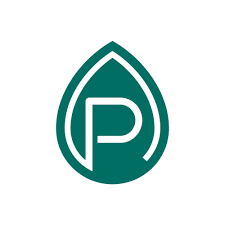What is gastroesophageal reflux?
Gastroesophageal reflux, also known as gastric reflux, is a condition that leads to the involuntary flow of acid material from the stomach back to the esophagus. This transition occurs physiologically daily, especially after meals, with gastric juices coming into contact with the inner wall of the esophagus, causing heartburn, acidity, and acid reflux rising into the oral cavity.
Gastroesophageal reflux occurs in both men and women, mainly in adulthood, between the ages of thirty and fifty, but is also common in newborns and during pregnancy. The condition affects about one in three people, with a higher incidence in the European population and an increased percentage with advancing age.
Symptoms of gastroesophageal reflux
The first common symptoms to recognize reflux are the burning sensation in the stomach, more correctly defined as heartburn, and regurgitation, or flow of acid material back to the mouth or esophagus. These often result in an annoying burning sensation in the upper abdomen and behind the sternum.
Other common symptoms are:
- chest pain
- cough
- sore throat
- bad breath
- nausea
- difficult swallowing
- palpitations
- asthma and difficult breathing
This symptomatology often worsens during the night hours due to the horizontal position and triggers other sleep dynamics such as sleep apnea and insomnia.
In most cases, gastric reflux manifests itself as a physiological phenomenon with sporadic and mild symptoms, thus falling under common disorders. However, it can become problematic and even, in the most severe cases, a gastroesophageal reflux disease (GERD) in the presence of high intensity, duration, and frequency of the phenomenon, causing a whole series of pathological disorders in the patient.
Many factors can influence the onset of the problem and its severity. However, the primary cause is related to anatomy. At the junction between the stomach and the esophagus, there is a valve, the gastroesophageal sphincter, belonging to the cardia, which allows the transit of food from the esophagus to the stomach in the form of a bolus and prevents reflux by closing. When this valve malfunctions and starts to open when it shouldn’t, this annoying condition occurs, caused by the reflux of gastric juices into the esophagus and mouth.
The sphincter malfunction may be due to various reasons, including the following:
- Excessive intra-abdominal pressure, which often occurs in overweight and obese individuals, as well as in pregnant women;
- Slow digestion and consequent prolonged permanence of food inside the stomach;
- A reaction to medications such as NSAID’s, antibiotics, sedatives, and antidepressants, which may cause a loosening of cardias pressure;
- Excessively abundant meals, or meals eaten too quickly;
- Poor eating habits that can lead to the breakdown of the gastroesophageal sphincter, such as abuse of alcohol, coffee, fatty foods, chocolate, and carbonated drinks;
- Unhealthy lifestyle: high stress, smoking, the habit of going to bed immediately after meals, to name a few;
- Involuntary muscle contractions of the esophagus.
Causes and lifestyles that trigger it
Many factors can influence the onset of the problem and its severity. However, the primary cause is related to anatomy. At the junction between the stomach and the esophagus, there is a valve, the gastroesophageal sphincter, belonging to the cardia, which allows the transit of food from the esophagus to the stomach in the form of a bolus and prevents reflux by closing. When this valve malfunctions and starts to open when it shouldn’t, this annoying condition occurs, caused by the reflux of gastric juices into the esophagus and mouth.
The sphincter malfunction may be due to various reasons, including the following:
- Excessive intra-abdominal pressure, which often occurs in overweight and obese individuals, as well as in pregnant women;
- Slow digestion and consequent prolonged permanence of food inside the stomach;
- A reaction to medications such as NSAID’s, antibiotics, sedatives, and antidepressants, which may cause a loosening of cardias pressure;
- Excessively abundant meals, or meals eaten too quickly;
- Poor eating habits that can lead to the breakdown of the gastroesophageal sphincter, such as abuse of alcohol, coffee, fatty foods, chocolate, and carbonated drinks;
- Unhealthy lifestyle: high stress, smoking, the habit of going to bed immediately after meals, to name a few;
- Involuntary muscle contractions of the esophagus.
PromoPharma’s natural remedies for gastroesophageal reflux
Among the functional natural remedies against gastric reflux, we find Xanacid, a PromoPharma food supplement available in sticks or tablets, to be taken as needed or starting a short therapy.
Xanacid Stick contains a complex of polysaccharide macromolecules extracted from Aloe Vera, Mallow, and Marshmallow. It forms a film adhered to the mucous membranes of the esophagus and stomach capable of protecting them with an action similar to the natural gastric mucus, giving relief to the areas attacked by acids, thus restoring the normal function of the stomach.
Xanacid tablets contain Calcium Carbonate and Magnesium Hydroxide with a synergistic action that buffers excess acidity and gives immediate relief. These antacids are, from a chemical point of view, weak bases that bind to strong acids to form neutral salts.
It is possible to take the two supplements in combined action. The recommended combined treatment spreads over a 10-day cycle to repeat as needed: one stick mid-morning, one stick in the evening before bedtime, and one tablet after meals.
Xanacid Digest, a brand-new food supplement that contains Fennel and Ginger promoting digestive function, regular gastrointestinal motility, and with an anti-nausea effect, Milk Thistle for the body’s purifying functions and liver function, and DigeZyme, a combination of five digestive enzymes (α-amylase, protease, cellulase, lactase, and lipase) for the digestion of carbohydrates, complex proteins, cellulosic fibers, lactose, and fats.
The characteristic of the Xanacid line resides in its natural formulations containing active ingredients with mechanical and non-pharmacological action. There are, therefore no problems in taking it in parallel with drugs for the treatment of hyperacidity, and it is also safe in pregnancy and breastfeeding.
Prevention: 5 useful tips on habits and diet
- Keep an eye on your body weight. Intra-abdominal pressure rises in overweight people, which increases – as mentioned – the risk of reflux.
- Physical activity. A healthy and active lifestyle reduces stress conditions often linked to reflux symptoms.
- Posture. After meals, especially in the evening, avoid lying down. It is better to sit or take a walk before going to sleep.
- Beware of smoking and alcohol, which tend to irritate and promote reflux reactions.
- Nutrition. It is better to choose more meals with smaller servings throughout the day to avoid stressing the digestive system.





